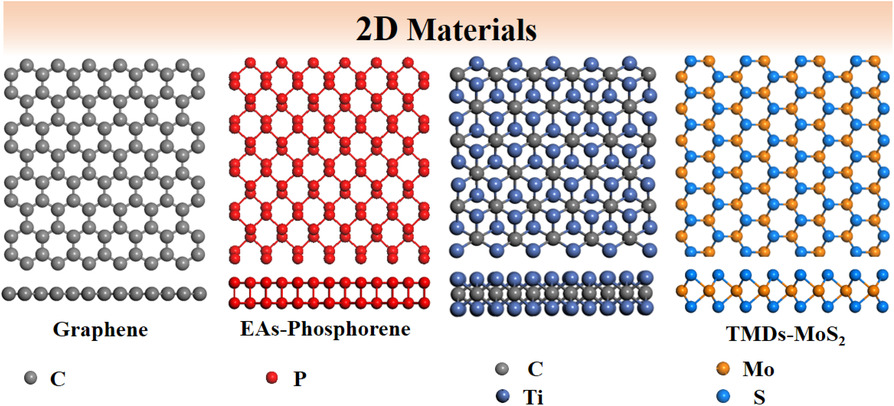C.X. Meng, P. Das, X.Y. Shi, Q. Fu,* K. Müllen,* and Z.-S. Wu*
Small Science, 2021, 1, 2000076.
DOI: 10.1002/smsc.202000076 [PDF]

The urgent need of modern society for portable energy-consuming devices has boosted the development of high-power supercapacitors and high-energy batteries. Major prerequisites for augmenting wider practical applications are advanced electrode materials and deeper insights into the underlying electrochemical processes. Owing to their unique physicochemical properties, two-dimensional (2D) materials such as graphene, transition metal carbides, nitrides and dichalcogenides hold special promise. Characterizing their behavior under real operating conditions (operando) or at the site of operation (in-situ) without disassembling the device helps uncover essential kinetic information which may otherwise be lost. By identifying both harmful and beneficial mechanisms, these in-situ and operando characterization techniques allow researchers to alleviate critical issues in existing materials and develop new materials with enhanced properties.In this review, a brief introduction includingthe preparation and the electrochemical energy storage application of 2D materials is first presented. The main concern, thereby, is the influence of preparation methods on the resulting electrode structure and electrochemical performance. Then, the electrochemical mechanisms underlying the operation of supercapacitors and lithium batteries were discussed in detail. Finally, the perspective and future direction of applying the in-situ and operando techniques to model 2D materials in revealing some important processes are highlighted.